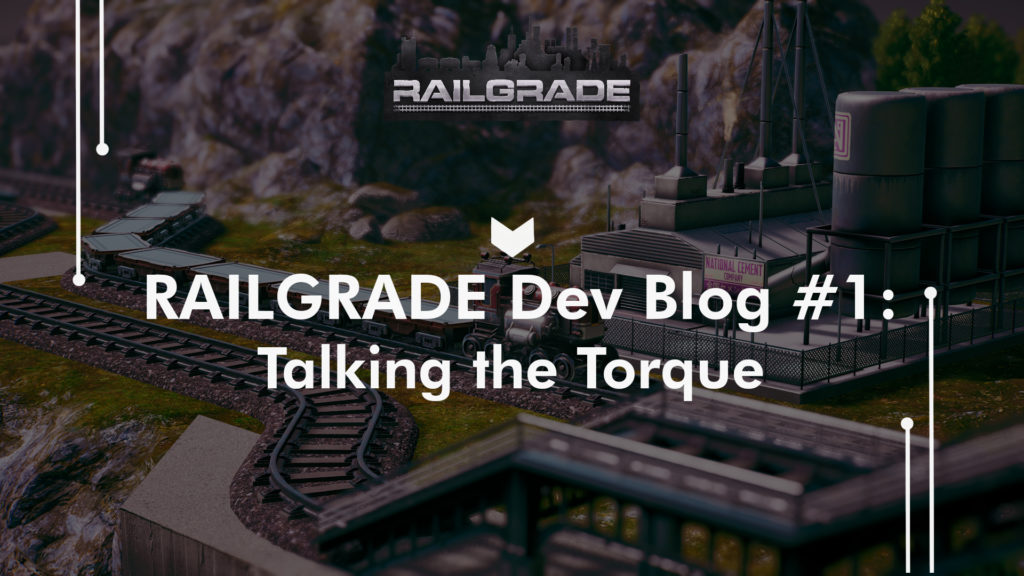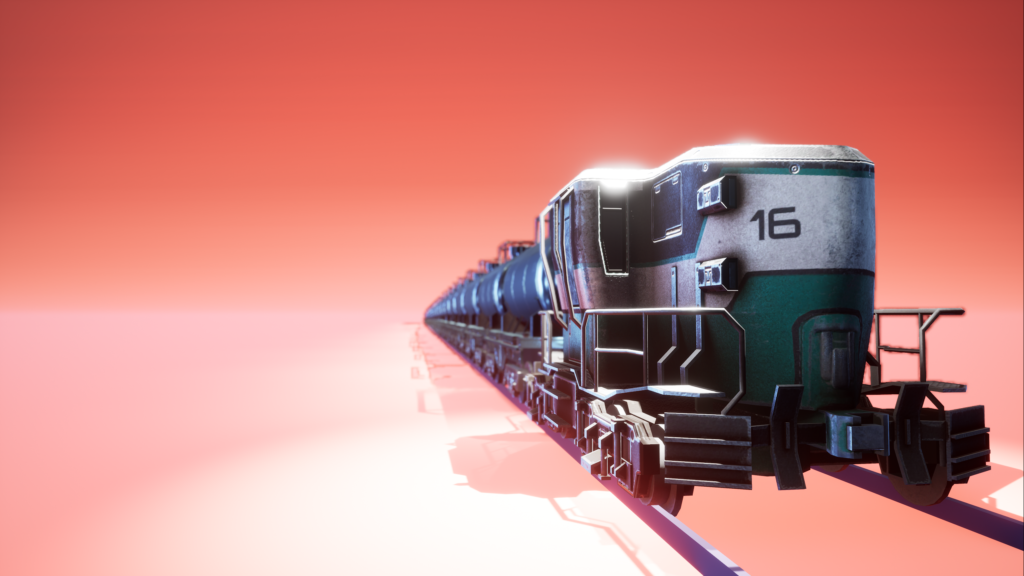Greetings Industrialists!
Today we’re going to be talking about what keeps everything moving in the game: the trains! In order to rejuvenate an entire colony’s economy, you’re going to be utilizing as many trains as possible, on as much track as possible. So, without delay and with maximum efficiency, let’s talk about trains!.
Why was a game about trains, industrial chains and rail network construction so compelling to make for you?
Daniel: Trains have always been a childhood favorite of mine, I had a wooden train set as a kid. My Dad built me a table for model railroading in our basement. Sadly, for 10 year old Daniel, model railroading was an expensive hobby. If I saved for many months I could, at best, buy a single rail car. It had a basic loop with 1 functioning engine. My parents bought me a plastic hill with a built-in tunnel and that tunnel served as the only cosmetic feature of that basic plywood world.
I was happy, however, and thankful to have a functioning railroad. It was a real model railroad set with a functioning control box and I remember running the train so fast it derailed around the corners.
What I remember most, is feeling how function-less a toy railroad was in comparison to actual railways. Sure, I can drive the train around a circle, but it delivers no real freight, it travels no real distance. I think what excites kids about trains is delivering freight, of being part of a greater whole.
I think that is why so many of the biggest model train sets are not in private collections, but giant museums built by volunteers, who want to see their creations shared publicly. For model railroading, having others see and enjoy it is the closest the dioramas can get to being part of a greater system.
Perhaps our greatest goal with the game was to give purpose to the player’s creation, to bring alive the fantasy of a functioning railroad economy. Everything is pointed towards that goal. We wrote a story-driven campaign to give purpose to each region.
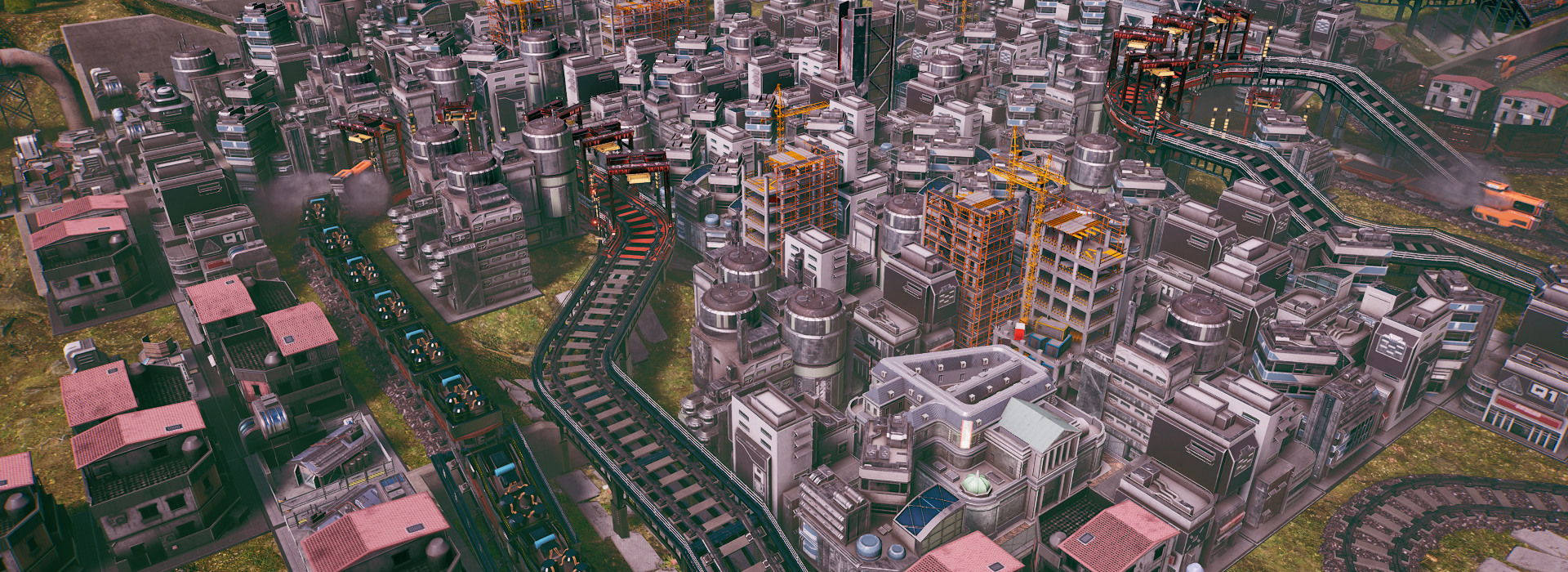
How did you land on the visual identity of the trains within the game?
Daniel: Have you ever been to Shinjuku? It’s the largest and busiest train station in the world, in the heart of the world’s largest city. Each day, more than 3 million people use the station. Yet, if you stand at the Yamanote platform, you’ll see giant rusting steel beams.
That rust is not unique to Shinjuku station, it’s rather common around Japan. Each building in Japan looks the best on the day it was built, then they age. Japan being a humid country, any exposed metal tends to rust. This culture of accepting rust and wear on buildings stands in sharp contrast with Japan’s love of brand new shiny cars. It’s this contrast that I wanted to reproduce in trains and industry within RAILGRADE. All our trains have shiny metal and fresh coats of paint as if brand new from the factory. This contrasts with the buildings and industry, which are gritty and rusted, as if running full time for decades.
What was the most fun part of designing the trains?
Daniel: The most fun part was the naming, though trains start conceptually from the visuals. Our goal with the trains is for every train to be recognizable from their silhouette. This implies trains all need rather large feature variations and these iterations are pure work. You design 4 shapes then pick one to iterate further. Meanwhile, naming is pure fun! It comes last and is a creative playground. Oftentimes the names jump out, with a train having developed its visuals, it now has a character. Naming becomes a game of charades, as if the train’s name is inherent to itself.
Perhaps the best example is the WorkHorse engine. The WorkHorse is lanky, as if standing on stilts or long legs. Every other train rides low and stable on the rails, while you can imagine WorkHorse falling if it took a curve too fast. Combined with the rectangular body, the train called out: “I am a horse, a work horse”.
The Boiler train was a bit more mechanical in characterization. An early obvious choice was to call it the SteamEngine, and we used that name for years. Thankfully, with the latest redesign, one aspect stood out: the Boiler. The Boiler engine’s design is centered around the off-center steam Boiler, as if the entire cabin is holding on to this haphazard pressure vessel. Thus, the Boiler engine told us its name!
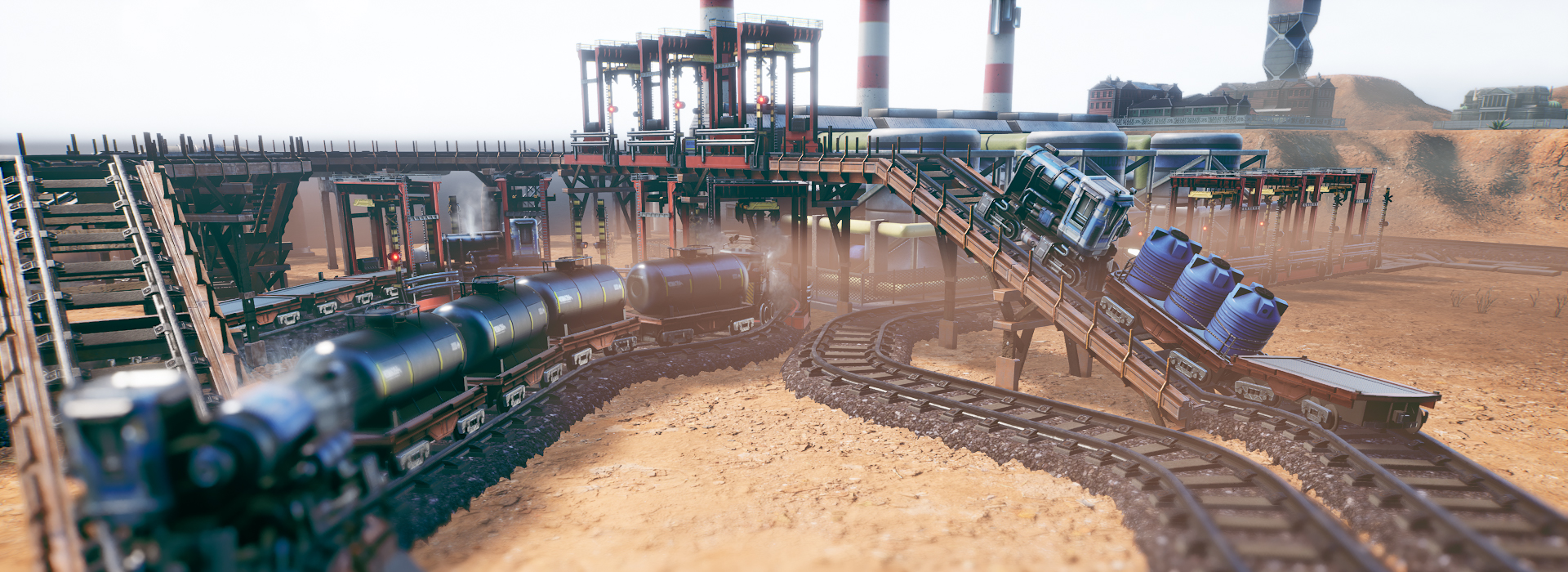
What was the most challenging aspect of creating trains for the game?
Daniel: A constant challenge for the art team was developing unique outlines. As I said earlier, we want each engine to maintain a unique silhouette. That design goal is inspired by early Team Fortress 2, which gave every character a unique silhouette. Valve did so to aid rapid identification during combat. We have no combat, obviously, our motivation is more about characterization.
In the Japanese games industry a core principle is the focus on characters. It is generally recognized that a strong game requires strong characters for players to connect with, to care about. Without a connection to characters, games become purely mechanical. With characters, player experience becomes emotional and motivated. You can see how this might be a problem for us, our gameplay revolves around industry, track and trains.
So, we made the trains characters in design, giving them unique shapes, colors, and purposes. Finally, every train has a unique personality, which shows through in their barks. It might be the Boiler thanking you for using an under-appreciated steam train or the boastful Industrial train, who takes on hills like a champ. As you play, you’ll encounter each train’s personality and likely form an opinion. Perhaps you’re not so impressed by the Industrial’s boasting?
What are some of the key differences between trains in the game, aside from visuals?
Daniel: Besides personality and looks, the primary difference is purpose. Each train serves a unique gameplay niche. This is for players to experiment with and discover but, I’ll mention a couple as examples:
The Boiler: Cheap, weak, and generally about making do with what you’ve got. We wanted to answer the question: “In the far future, why would anyone use steam trains?” We think the Boiler is a good answer to that. It provides basic pulling power, far cheaper than other engines. In the lore, it’s also the easiest Engine to license. WestMinister, the Manufacturer of the Boiler, is not worried about competitors stealing the design.
The WorkHorse: Balanced. Once players come to terms with the limits of the Boiler, they earn perhaps the most reliable engine in the game, the WorkHorse. It cannot pull the most, go too fast, nor does it climb hills particularly well. Instead, it serves as an average, reliable choice.
The Industrial: Hills! Early versions of this engine were called the HillClimber. It can pull a large load up any hill at a decent and constant speed. Its main drawback is the low gearing required for its high torque, thus it cannot go fast, even downhill.
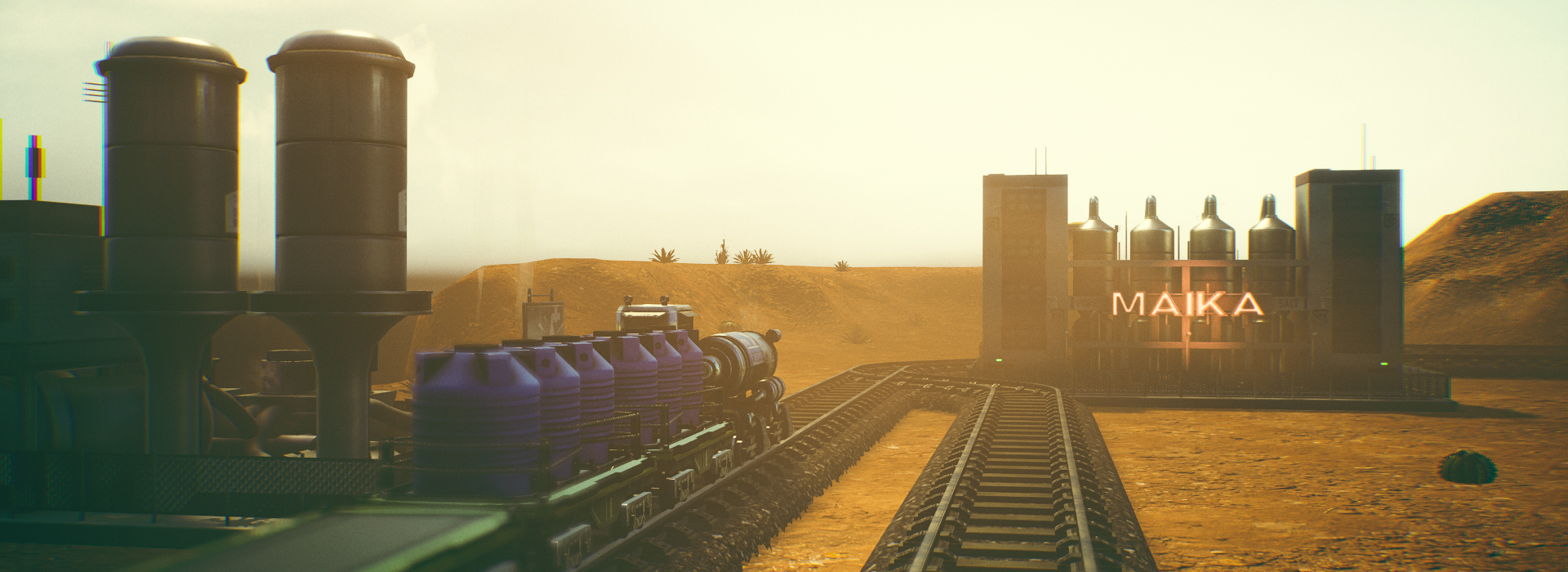
Do you have a personal favourite among the trains?
Daniel: This goes back to the creative process for me. I remember seeing the first block outs of the Industrial train and being shocked with awe. The asymmetry and split rail covers was pure brilliance. No other train to that point used asymmetry, yet upon seeing it, the advantages were obvious. I couldn’t believe we didn’t think of it earlier. The original brief for the Industrial train was made up of references to mining equipment. The final design incorporates a gantry-style walkway, which makes the engine feel larger than life. I had to confirm with the artist that this train wasn’t larger than normal, but it fits in the same footprint as all others.
Chris: If asked to narrow down my choice to a single train, I’d go with the NewBullet. It’s the fastest engine and its futuristic design left the strongest impression on me. It being the fastest allows for the quickest routes, provided those routes are flat. This means that on most maps, players will have to leverage the third dimension to avoid terrain by building elevated tracks. This use of the third dimension is something I haven’t seen often in existing train games. I’m personally biased, because I implemented the system, which provides elevated tracks. So, having people use this track support system makes its implementation all the more worth it.
Daniel: I want to interject here, everyone needs to know how much work Chris put into that track support system. We have 3 types of tracks, each one required Chris to splice up the base geometry into 120 track support pieces. Then, he wrote code to dynamically assemble the 3D mesh on the CPU before pushing to the GPU. It’s impressive work and without it, our performance would be in the swamp.
Chris: Well, I think if I was asked to do that all over again, I would probably approach it a bit differently. But, I appreciate that I was given the time to develop a system which properly covers a lot of rare cases in which tracks can be placed, even if that implied the need for almost 400 individual parts. So, please enjoy the precise fittings between tracks as you speed by, riding the NewBullet!
Jordan: I like the Boiler Engine because of the ramshackle nature of it. It appears to be falling apart when running and the steam shooting out of the gaskets where proper maintenance implies it should not be!
https://youtu.be/hOql6VT1QNU
That’s all for this month’s installment of RAILGRADE’s blog! We cannot wait for you to get your hands on all of the trains and develop your own affinity for them. Don’t forget to keep yourself up to date with all things RAILGRADE on our Twitter and Discord.
RAILGRADE arrives September 29th on PC via the Epic Games Store and the Nintendo Switch via the eShop for $19.99. Wishlist today!
Until next time, keep good time, Industrialists.

